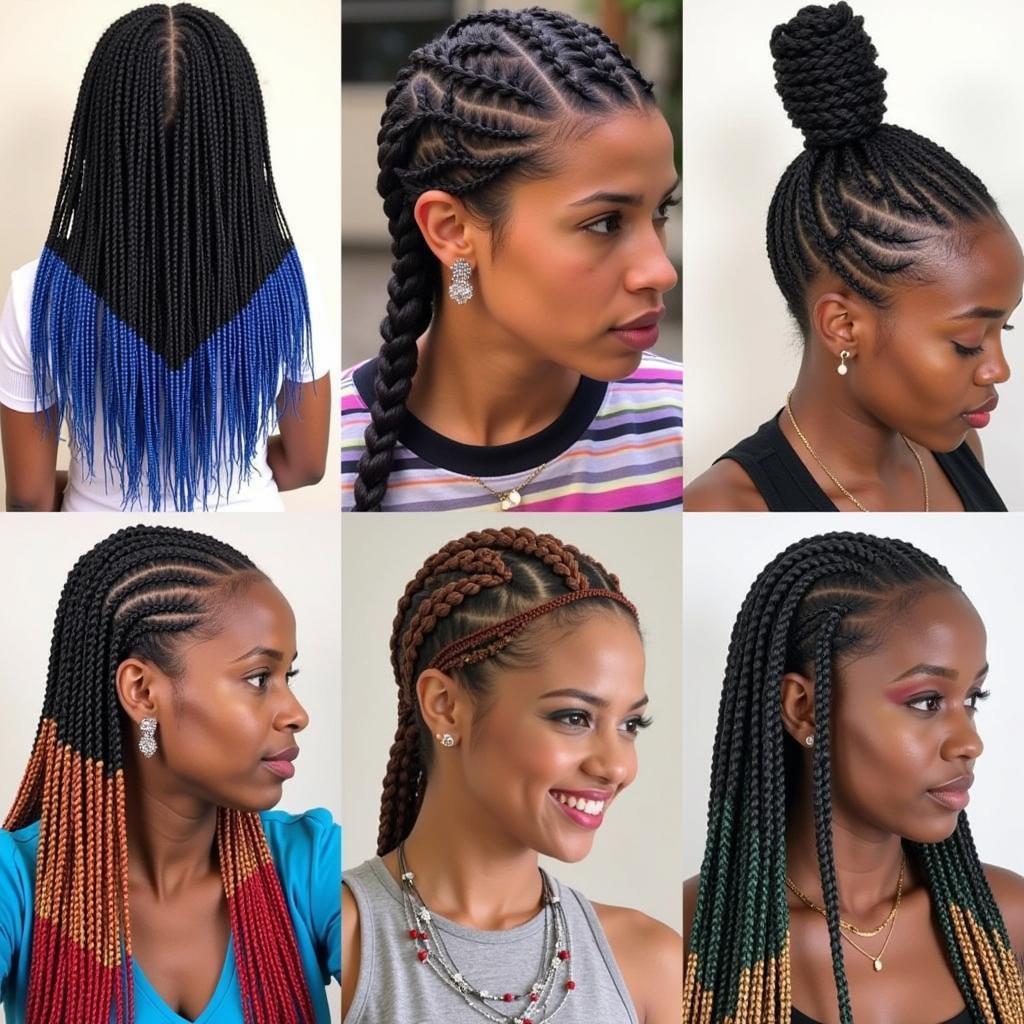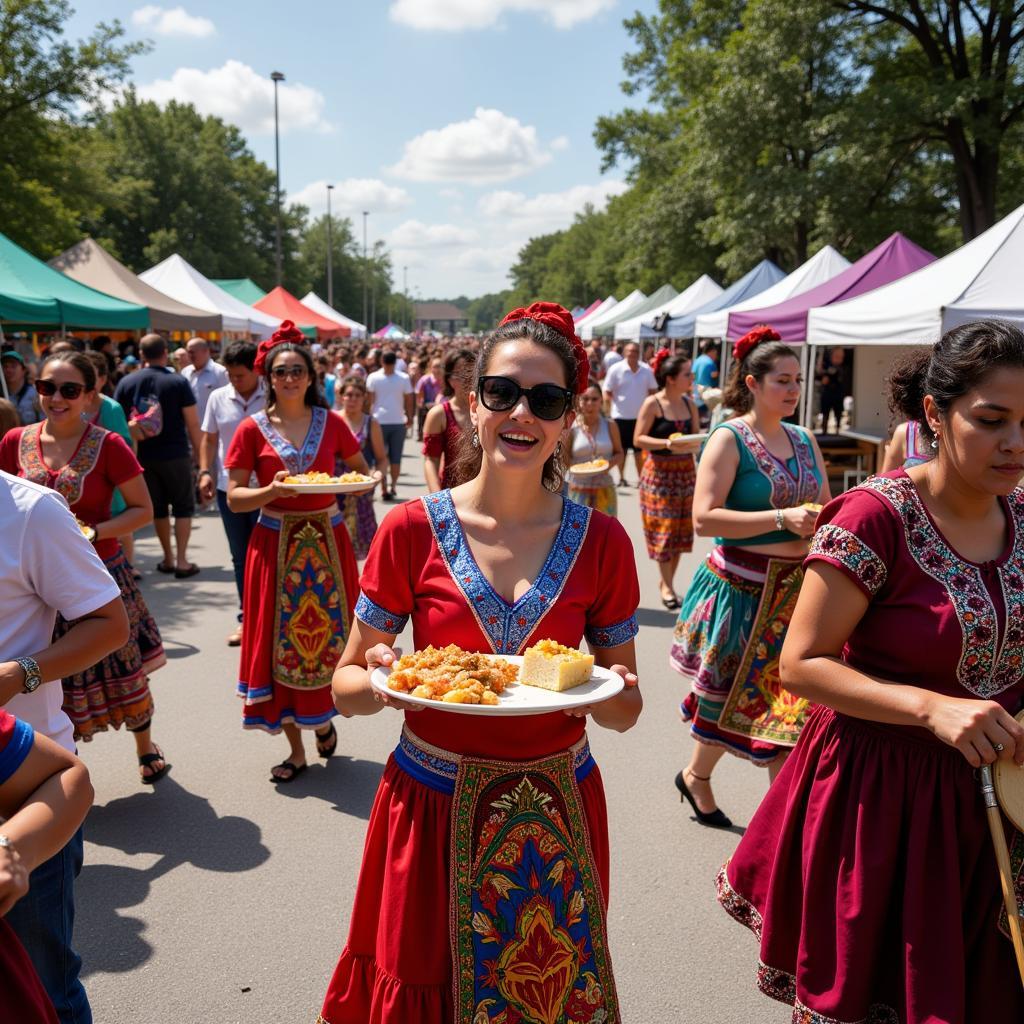Unveiling the Story of African Bark Cloth: Your On-Ramp to a Rich Heritage
African bark cloth, often referred to as “fabric of kings,” holds a captivating narrative that stretches back centuries. Unlike woven textiles, this unique material is crafted through a meticulous process of harvesting, preparing, and decorating the inner bark of specific trees, primarily the Mutuba fig tree. This ancient practice, deeply rooted in African heritage, results in a beautiful, durable, and versatile material used for clothing, ceremonial garments, wall hangings, and more.
Delving into the History of African Bark Cloth
The art of making bark cloth is believed to have originated in East Africa, specifically in present-day Uganda, over 800 years ago. Archaeological discoveries reveal bark cloth fragments dating back to the 13th century, showcasing the longstanding tradition and significance of this craft in the region. From its humble beginnings, bark cloth production spread throughout various parts of sub-Saharan Africa, with each community developing its own distinctive techniques and styles.
The Making of African Bark Cloth: A Labor of Love
The creation of African bark cloth is a testament to human ingenuity and patience, involving a multi-step process demanding skill and precision.
- Harvesting: The process commences with the careful selection of mature Mutuba fig trees. Skilled artisans make incisions on the tree trunk, ensuring minimal damage to the tree, allowing it to regenerate its bark over time.
- Stripping: The harvested bark is then carefully stripped from the tree, revealing the inner layer known as the bast.
- Soaking: The bast is soaked in water for several days to soften the fibers and facilitate the removal of any remaining outer bark.
- Beating: Once softened, the bast is laid on a smooth surface and meticulously beaten with wooden mallets. The beating process, often done rhythmically, stretches and interlaces the fibers, transforming the rough bark into a fine, textile-like material.
- Drying: The beaten cloth is then carefully stretched and left to dry in the sun. Sun-drying not only strengthens the fabric but also bleaches it naturally, resulting in a beautiful, earthy tone.
- Decoration: After drying, the bark cloth is ready for embellishment. Using natural dyes derived from plants, roots, and minerals, artisans adorn the cloth with intricate patterns, symbolic motifs, and vibrant colors, reflecting their cultural heritage and artistic expression.
The Cultural Significance of African Bark Cloth
African bark cloth is more than just a fabric; it’s a symbol of cultural identity, tradition, and spirituality, deeply woven into the social fabric of many African communities.
- Ceremonial Garments: Bark cloth holds immense cultural importance and is often used to create ceremonial garments worn during rites of passage, rituals, and festivals. These garments, often adorned with intricate designs and symbolic motifs, reflect the wearer’s status, lineage, and connection to their ancestors.
- Royal Attire: Historically, bark cloth played a significant role in royal courts, symbolizing power, prestige, and authority. Kings and chiefs wore elaborate bark cloth robes as a mark of their status and to distinguish themselves within their communities.
- Sacred Wraps: Bark cloth is also used in some cultures to wrap sacred objects, offerings, and even the deceased, signifying respect, reverence, and the cyclical nature of life and death.
African Bark Cloth in the Modern World: A Resurgence of Tradition
Today, African bark cloth experiences a revival as designers and artists worldwide recognize its unique qualities and cultural significance. Contemporary fashion designers incorporate bark cloth into their collections, creating stunning garments and accessories that blend traditional techniques with modern aesthetics.
Conclusion
African bark cloth offers a fascinating glimpse into the rich cultural tapestry of Africa. This ancient craft, passed down through generations, continues to thrive, embodying resilience, artistry, and a deep connection to nature. From its humble origins to its modern interpretations, African bark cloth stands as a testament to the enduring legacy of African creativity and the power of cultural heritage.
Frequently Asked Questions about African Bark Cloth
- What makes African bark cloth unique? Unlike woven fabrics, bark cloth is made by pounding and stretching the inner bark of trees, primarily the Mutuba fig tree.
- Is African bark cloth sustainable? Yes, harvesting bark cloth is typically done sustainably. The bark is carefully removed, allowing the tree to regenerate, and natural dyes are used for decoration.
- What are the contemporary uses of African bark cloth? Today, bark cloth is used in fashion, interior design, and art, showcasing its versatility and enduring appeal.
Need Assistance?
For inquiries about African bark cloth, its history, or to explore our collection, contact us at:
Phone: +255768904061
Email: [email protected]
Address: Mbarali DC Mawindi, Kangaga, Tanzania
Our dedicated team is available 24/7 to assist you.



